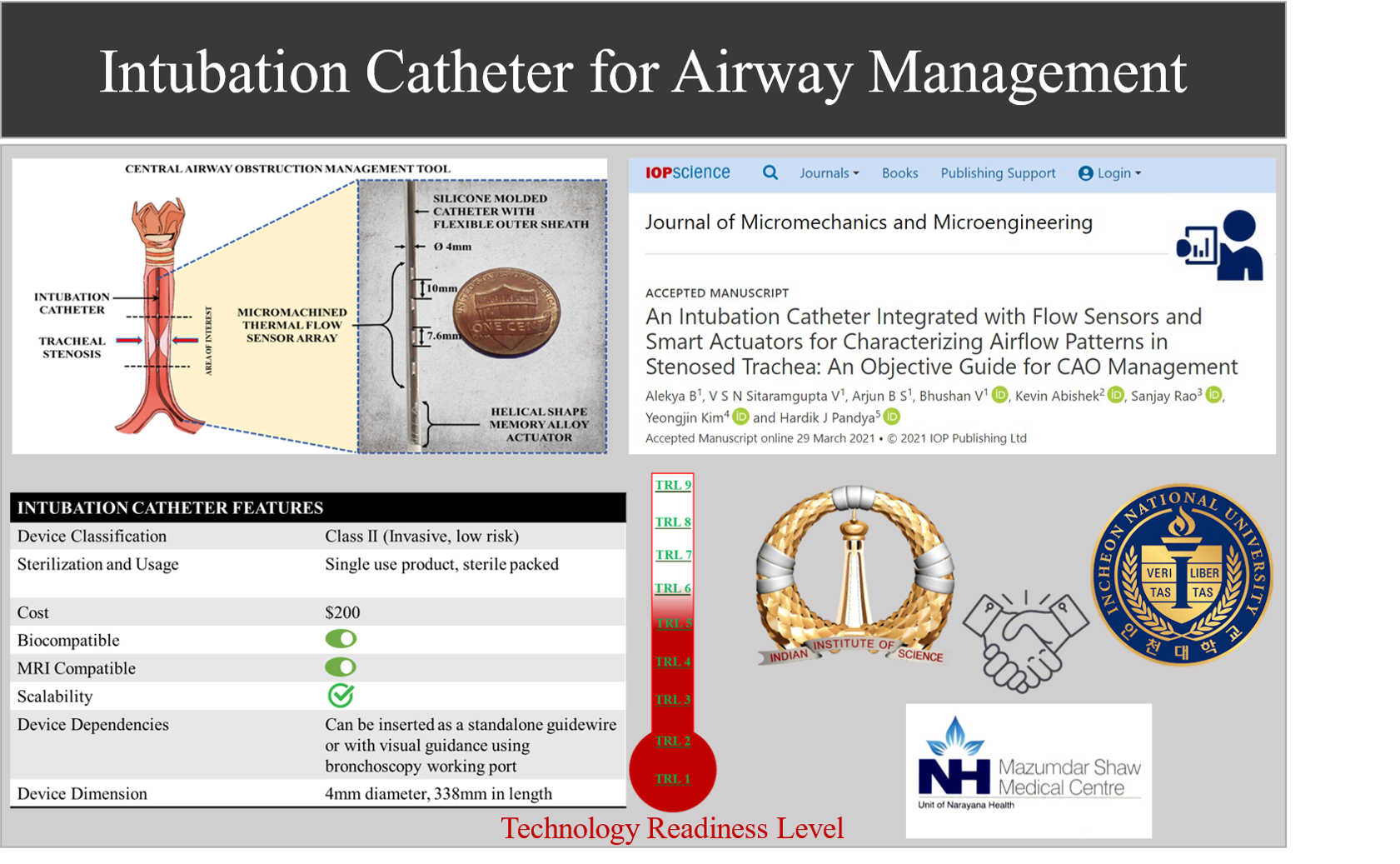Catheter to sense obstructions in airways
Stenosis is a condition where the effective lumen (interior) area is reduced in the tracheal and bronchial segments of our respiratory tract or airway due to obstructions. This narrowing increases resistance to airflow; severe narrowing is often associated with morbidity and mortality.

Characterising airflow patterns in the stenosed (obstructed) airway calls for newer diagnostic tools that can effectively quantify airflow changes at specific obstructed sites. Researchers from the Department of Electronic Systems Engineering, Alekya B and Hardik J Pandya, with collaborators Yeongjin Kim and Sanjay Rao, have demonstrated a manoeuvrable intubation catheter that can quantitatively measure air velocity across various segments of the tracheobronchial tree.
The catheter consists of a three-layer flexible printed circuit board integrated with thermal flow sensors based on micro-electro-mechanical systems (MEMS) as well as a pair of sub-millimeter helical-shaped memory actuators. The researchers tested it by measuring air velocity in sheep trachea under normal and stenosed conditions. Even a 10% reduction in lumen area generated unique peaks corresponding to the obstruction site. Such a catheter can be used to identify stenosis at the pre-clinical stages.
REFERENCE:
B Alekya, V S N Sitaramgupta V, B S Arjun, V Bhushan, Kevin Abishek, Sanjay Rao, Yeongjin Kim and Hardik J Pandya, An Intubation Catheter Integrated with Flow Sensors and Smart Actuators for Characterizing Airflow Patterns in Stenosed Trachea: An Objective Guide for CAO Management, Journal of Micromechanics and Microengineering (2021).
https://doi.org/10.1088/1361-6439/abf335
LAB WEBSITE:
https://labs.dese.iisc.ac.in/beeslab/




